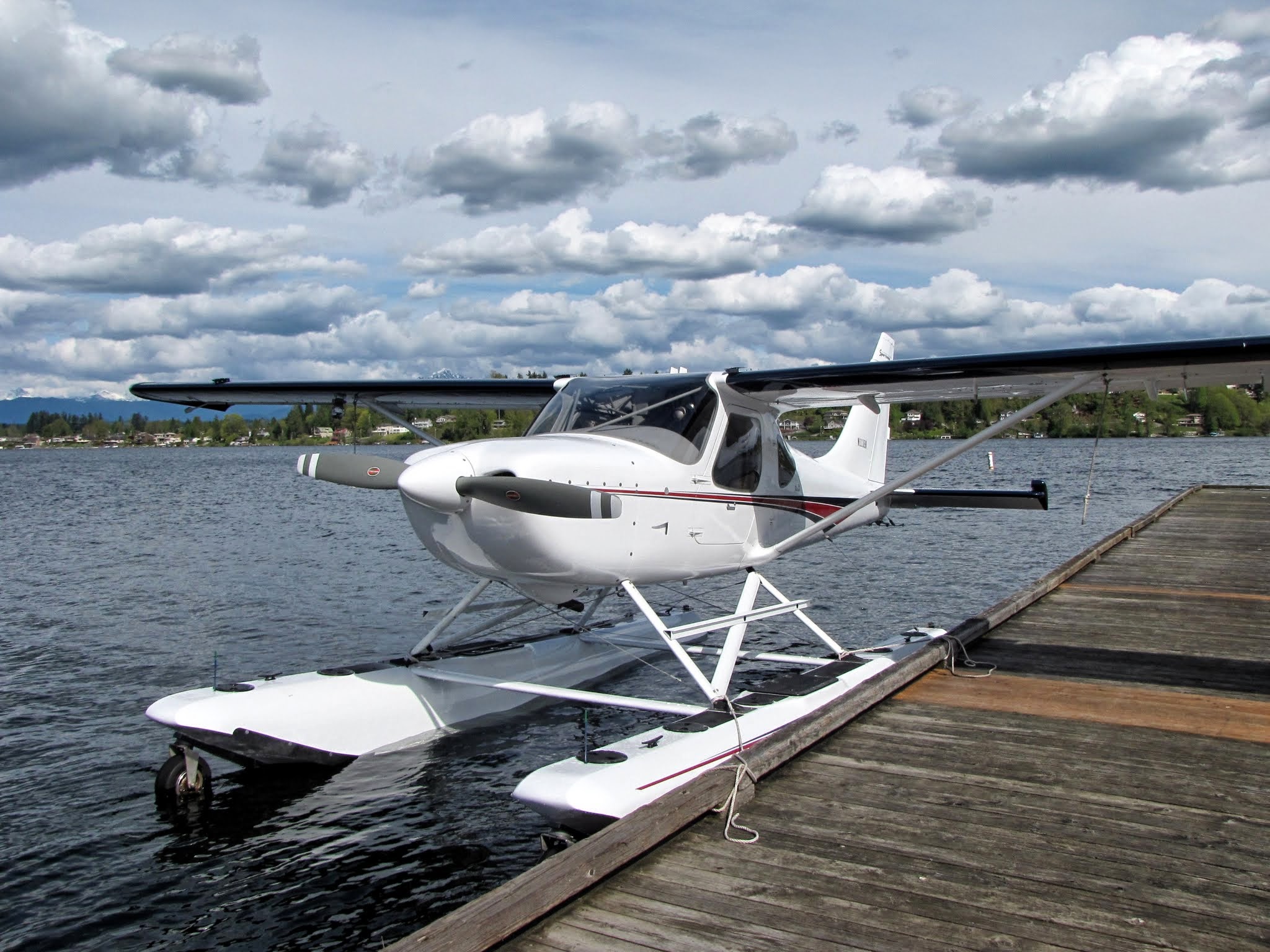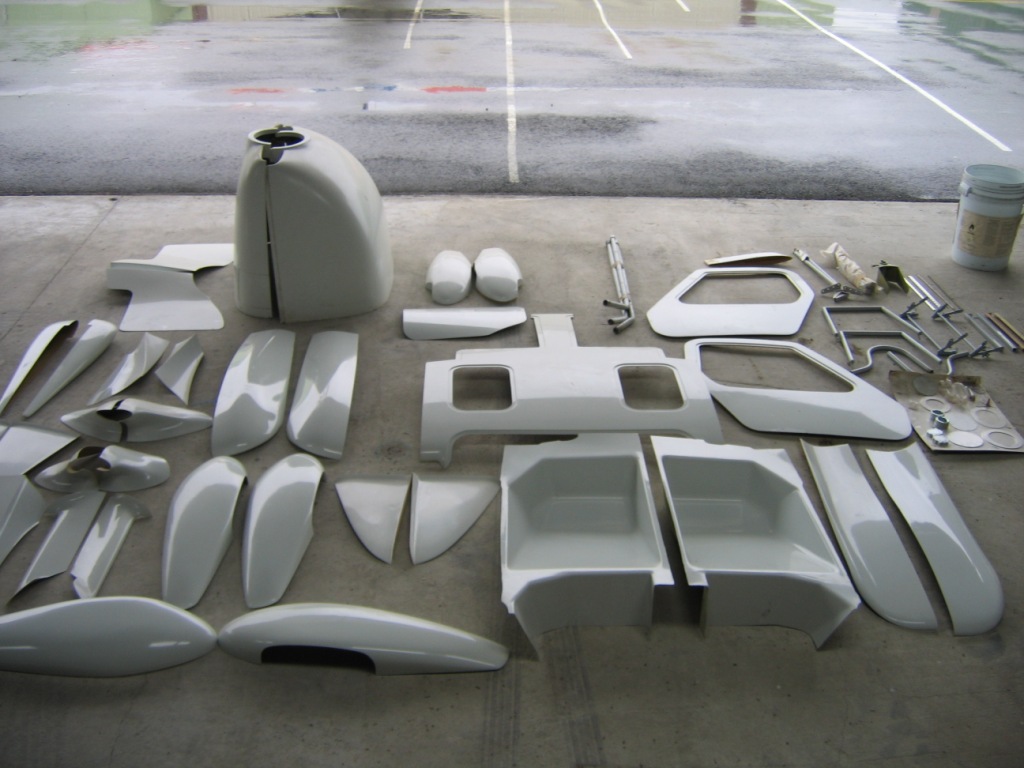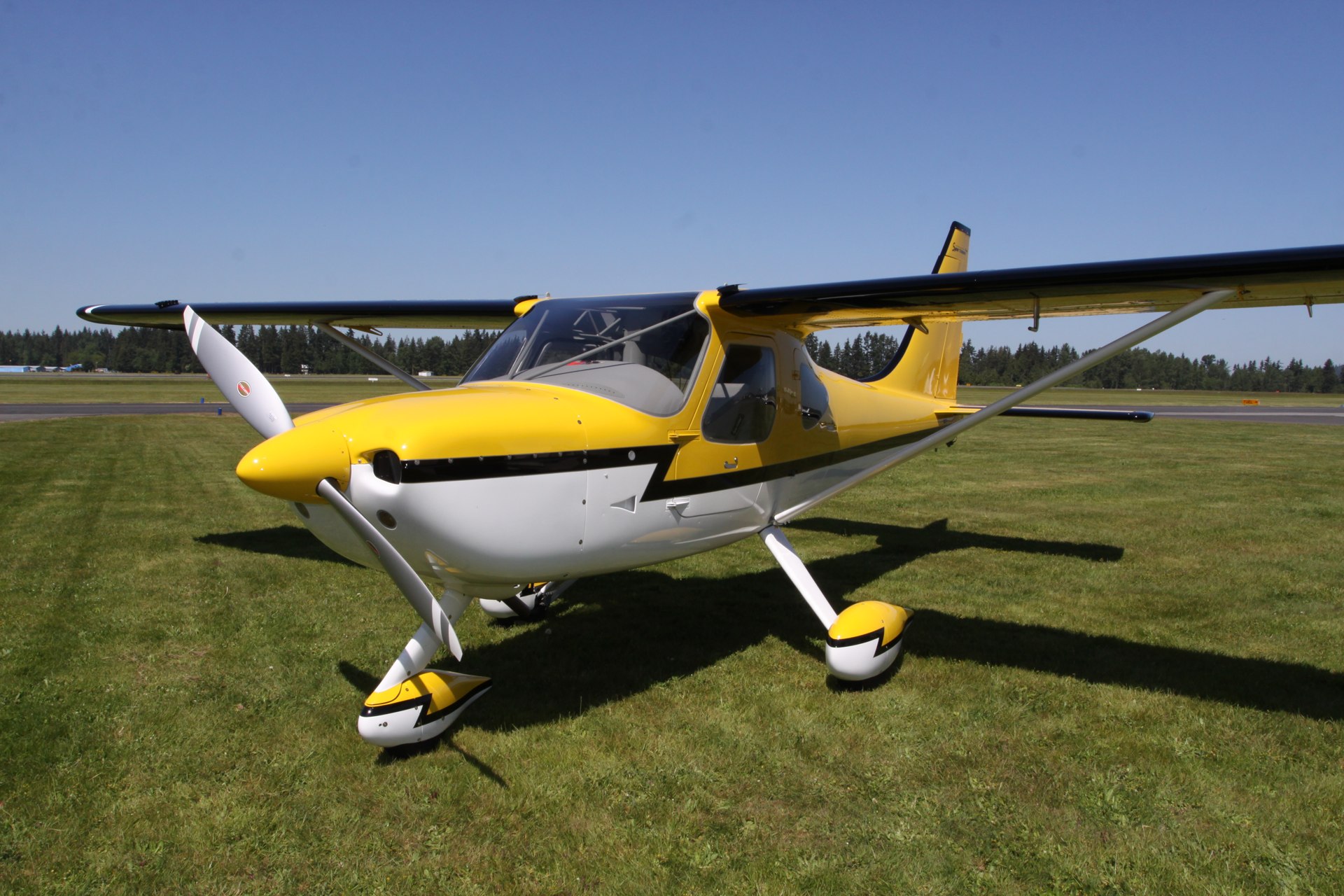 Flying season is here, Yea! For many it’s been a very long winter with little flying. No doubt there are more thoughts of flying adventures and perhaps buying & selling as well. New or partially built kits, New Two Weeks to Taxi Sportsman, or pre-owned and flying Glasair, Glastar or Sportsman aircraft; everything is up for consideration and I hope to provide some useful information for everyone that may be considering adding, subtracting or making a change in what they now own .
Flying season is here, Yea! For many it’s been a very long winter with little flying. No doubt there are more thoughts of flying adventures and perhaps buying & selling as well. New or partially built kits, New Two Weeks to Taxi Sportsman, or pre-owned and flying Glasair, Glastar or Sportsman aircraft; everything is up for consideration and I hope to provide some useful information for everyone that may be considering adding, subtracting or making a change in what they now own .
There may be members of this Association that are not yet owners or builders, considering or actively seeking a project or flying aircraft. There may also be those considering selling altogether or perhaps making a change for one reason or another. I have tried to include something here of value for everyone.
Selling
Most people don’t think about the process of selling their dream airplane before they’ve built or purchased it, right? Who would do such a thing when there are so many other factors to decide. Whether you’re building a Sportsman in the Two Weeks to Taxi program or building a new or partially built kit, there are a lot of other things to be thinking about, right? Which engine and propeller, what avionics, other accessories and upgrade modifications are you going to install, where are you going to get them and in what order, etc. If you build a Sportsman in the TWTT program, all of the scheduling and sourcing is taken care of. It’s all there waiting for you when you show up. You just decide what you want from the options list, pay for it, show up, and build it.
When I worked full-time for the factory, I always reminded everyone that someday the dream airplane you are going to build or acquire is going to be somebody else’s when you’re done with it. My advice was to make sure as you customize your dream machine to suit your tastes, don’t do anything to make the airplane less desirable for someone else. To make it less “marketable” or you’ll probably have a very difficult time selling it.
Most of our airplanes will last way longer than we can expect to be able to fly them, as long as they are well cared for and there are no catastrophic accidents that destroy them. The first Glasair kits were sold, built and flying in the early 80’s and many are still out there, safely flying today.
If you’re selling, the obvious big question is how much do I ask for what I have? The value of what you have to sell is based on many factors. There are certain criteria for establishing a selling price that most everyone will consider or be aware of. Age, condition, equipment (engine, prop, avionics, options that may include upgraded modifications), capability (gear configuration) are the most obvious. If it is a partially built kit; is it complete, is it organized and easy to inventory? Is any work that has been completed, well documented, and of good quality? Is there a detailed, documented chain of ownership?
Marketability
Marketability may not be as obvious but is equally if not the most important factor to consider. Exactly what is it and how is it quantified? Marketability can better be explained through an example. Let’s say there are two or more Glasair aircraft listed for sale. They are similar in age, (chronological as well as total time) engine size, prop, gear configuration, condition, equipment, accessories, etc. And let’s say they are priced about the same.
How would the prospective buyer decide which one to buy? They might start looking at things like, the paint scheme, panel layout, upholstery and other finish details, log book completeness. They would probably chose to purchase the one that has more “curb appeal”. A term we’re all familiar with when it comes to houses and cars, but it also applies equally to airplanes or anything it is being sold. Perhaps marketability and curb appeal could be considered synonymous.
When a buyer comes to look at your airplane or project, they may be comparing what they see in your hangar with others they have looked or will look at next. They may see a big difference in cleanliness, or how well organized the hangars (assuming they are in hangars), or how organized the build documents are, etc. that just might tell them something about how well you have cared for your aircraft or project and possibly how well is it was constructed. What does the wiring look like under the panel? Is it well organized and well routed bundles or does it look not so good? What does it look like in the engine compartment? Is the engine clean and free from oil? Are all the lines, hoses and electrical wiring routed nicely? Are they zip ties around the engine mount, or are they Adel clamps instead?

You should make your airplane, or project as marketable as you can by paying attention to all the details that a prospective buyer is going to consider, not only the obvious but also not so obvious that may increase the curb appeal of what you have to sell. That will have an effect on price as much as any of the other more obvious factors people consider and it will likely have an effect on how quickly you make your sale as well. If a prospective buyer shows up and likes what they see, they just might feel like they don’t need to go any further and look at anything else. What would you want to see or not see if you were buying?
Modifications can help or hurt you sell your aircraft. I would expect installing a new large cargo door in a Glastar would make that more marketable down the road compared to a similar one without it. Would you be able to recover the cost of the parts and labor to install it? Maybe yes, maybe no, but it should make it easier to sell and it’s impossible to tell how much more it might bring in the selling price.
I have seen many used Glasair aircraft that had goofy panel layouts; flight instruments (six pack) on the right side instead of the left side. Just because you may want to fly from the right side, doesn’t mean someone else will. I have seen other examples of wild paint schemes and colors that may be your love, but not appeal to anyone else. It’s your dream machine and you should make it for you, but I am just saying you should consider how easily will it be to sell when you decide it is time to let it go. How many people want to buy an airplane with shark’s teeth or a camo paint job? I don’t really know. Maybe more than I think, but I expect that kind of motif is going to appeal to very few.
Here is a checklist of some of the things to consider. I am sure many of you can add to this, but these are what I would consider the main points if your are selling.
- Pick a price and be prepared to negotiate. Coming up with a price is challenging. It is difficult to obtain information on actual selling prices. You can find ads for similar aircraft to at least determine their asking prices.
- Have all documentation ready for inspection. You should have the “AROW” documents in the airplane at all times. (Airworthiness Certificate, FAA Registration, Operating Limitations, Weight and Balance Document). All builder logs, photos and other documents. All operating manuals and handbooks for the aircraft, avionics and other equipment. All required placards show also be properly mounted (passenger warning and two inch “Experimental”).
A word about the aircraft documents. I have been quite surprised, more than once to show up for an aircraft pick-up or delivery and find that one or more of the required “AROW” (it used to be ARROW, but the requirement for a aircraft “Radio Station” license was dropped in 1996) documents is not in the aircraft.
The Operating Limitations is a four or five page type written document that is specific to an individual aircraft. Since experimental aircraft are not built under an FAA type certificate, each individual aircraft is issued operating limitations for that particular aircraft at the time of the initial inspection and are issued with and usually attached to the airworthiness certificate. They need to be in the airplane at all times and must remain there forever. They go with the airplane as the airplane changes hands. If they are not in the airplane, it cannot be legally flown just as the Airworthiness Certificate, Registration and current Weight and Balance must be on board.
- Make it look presentable and desirable. A little elbow grease goes a long way. Clean and polish (if it is painted) it and clean up the area around it.
- Decide if you want to sell it yourself or use a broker. If you do use a broker, pick someone who is very familiar with our type of aircraft. (I am trying to avoid a shameless plug for my services, but I have had pretty good success so far)
- If you sell it yourself, write a descriptive ad with as much detail as you can. If advertising on one of the websites (I use Barnstormers and Trade-A-Plane), always put up some good, well lit, in focus, photos. Include as much detail on the equipment and extras as you can come up with. Make it marketable (desirable). Of course the Glasair Aircraft Association forum site is also a great place to advertise. There may be someone in our own group who wants what you have. Parts, projects and planes change hands frequently among our members.
If you are not yet a member and know you want to own a Glasair aircraft, then I urge you to join. It will be the best investment you can make. For the mere $40 a year, you will have an endless and detailed access to all resources and knowledge involving building, flying and caring for your Glasair. There is much more value as well, but that is may be enough material for another article. (I refer to the extremely knowledgeable, mostly friendly but somewhat eccentric (in a lovable way) membership of this wonderful community).
- If you are selling an experimental aircraft, there is always a question of liability. Are you liable as the manufacturer if someone gets seriously injured or killed in the future. There may be but I am not a lawyer and I don’t play one on TV either. How high is the risk of a legal action happening? I don’t really know, but it does not seem like it is very likely. Only you can decide if that is something to worry about.
The EAA has produced an Experimental Bill of Sale (and Liability Release) form that can be downloaded from the web. I don’t think there is any way you can insulate yourself from completely from legal liability. However, using this form and having a purchaser sign it might, at least provide you with some peace of mind and may provide some deterrence. We all know that in the world we live in, someone can sue us anytime for almost any kind of frivolous reason. Essentially the language is more of an acknowledgment that the builder of the aircraft or project is an amateur and the aircraft or project is experimental and nothing is guaranteed to be safe, etc. The buyer is now accepting all risk and absolving the seller and previous owner and builder of same.
I mentioned to Ted Setzer recently over lunch, about writing this article and section on seller liability. He added some additional tips for a seller to help insulate themselves, so I am adding them.
Ted’s advice is to not only maintain good written and photographic records of your construction of the aircraft or project, but actually pay a professional who is familiar with the type to conduct a thorough pre-sale inspection and examine, your logs, documents and the aircraft or project and provide a written summary of the aircraft’s condition. This will give you the opportunity to either remedy the issues before the sale, or disclose them to the buyer. If you do offer a discount from the asking price, get a signed statement from the buyer that the discount is “for the purpose of providing for the remedy of certain (list them) discrepancies discovered during the pre-sale inspection” or discrepancies noted during the buyer’s inspection. He suggested this just in the unlikely event that someone down the line from you or his or her family tries to claim it was your fault. Ted mentioned that he’s often told Glasair, GlaStar and Sportsman owners to project themselves into a future courtroom and picture a lawyer showing photos of a mangled wreck to a jury and accusing them of being responsible for the death or injury of their loved one because of their negligence in building or maintaining the aircraft. If you have documentation that while in your care, your aircraft or project was well cared for with proper accepted maintenance methods and standards, your defense attorney will have much more ammunition to be able to protect you. The good news is that these types of lawsuits are rare.
Buying
So now you’re in the market to buy a pre-owned and flying Glasair aircraft or perhaps a partially built kit. How do you find what’s right for you?
If you’re in the market for a new Sportsman, the Two Weeks to Taxi Program is a great way to go, at least I think so. There are still builders out there that want to build in the traditional way and that’s also great. We have all seen many fine examples of beautiful and well built GlaStar and Sportsman aircraft.
Whether you are looking for a project or a finished and flying aircraft, no one wants to buy somebody else’s headache, unless of course, you know exactly what you are getting into.
I’ve found many of these airplanes and projects can be found on Barnstomers and on Trade-a-plane. Trade-a-Plane also has the print edition, but their website is much easier to search and the online ads will have more information and may contain multiple photos. The Glasair Aircraft Owners association forum site also has listings for sale. You may just find what you are looking for within the membership of this group. There are a number of other websites and printed publications, but they don’t seem to have the traffic, nor the content. Controller is one of the larger print and web sources for airplane classifieds, but they too have very few experimental listings to choose from as compared to Barnstomers and Trade-a-plane.
Whether you are looking for a project or a finished an flying aircraft, no one wants to buy somebody else’s headache, unless of course, you know exactly what you are getting into.

When I was working full time at the factory, people would call in and ask about the value, or how they could be sure about the asking price of a partially completed kit.
My advice included (and still does) informing them, one of the biggest challenges is being able to completely inventory all the parts. This could especially be a problem if the kit has changed hands multiple times and moved about the country. If you do decide to purchase someone else’s project, be prepared for there to be missing parts, unless the seller has it meticulously organized and well documented.
Don’t be calling the factory and expecting them to supply you a couple of gallons of resin because the original buyer, some many years ago was promised they could get resin down the road when they needed it. Be prepared to pay a fee to the factory to re-register the kit into your name and sign a purchase agreement.
When it comes time for the FAA registration of the aircraft being built from a kit, along with all the other paper work, the FAA will want to see a Kit Bill of Sale instead of an Aircraft Bill of Sale. I am referring to the FAA form AC 8050-2 that must be submitted when an aircraft or kit changes hands. The Kit Bill of Sale only needs to be submitted once when the kit is being registered with an “N” number. It may or may not be ready or even close to flying yet.
When I worked for the factory, I used to be able to find a version that could be completed online and then printed, but not saved. I haven’t been able to find that version anymore. However, it is a fairly simple form and can be easily and quickly filled out by hand. If you cannot find an FAA form AC 8050-2 form that says “Kit” at the top, the FAA will accept the word “Aircraft” crossed out and the word “Kit” hand written instead. If the kit was originally purchased from the old company, Stoddard-Hamilton, and there is no FAA Kit Bill of Sale available, the FAA will usually accept a statement that the old company is no longer in existence and therefore, you cannot obtain a kit bill of sale from them. If it is a flying aircraft that is changing hands, then it is an aircraft bill of sale and the standard AC 8050-2 is used.
The EAA has a fantastic packet you can purchase for about $20 that contains all of the blank documents and a detailed instruction book showing examples of how to complete all forms required for not only registering a new kit but also how to request an inspection for one that is complete and ready to fly. You can obtain one directly from the EAA or possibly Glasair Aviation.
If you are looking to buy a completed and flying aircraft, then you will also want to make sure of what you’re getting. Obtaining a pre-purchase inspection by someone who knows these aircraft, can be a challenge, depending on its location, but with a little work, you should be able to find someone who can complete the job. I would rather pay extra to find someone who really knows these airplanes, even if I have to pay for them to come to the aircraft from another part of the country. You may be able to find someone in the area through our membership that can help you.
You’ll probably want to fly the aircraft too. However, if its in estate sale, or the owner is no longer able to fly, you again may have to get creative to find someone who can safely fly it and give you a good demo.
Make sure all the documentation is with the aircraft. I’d want to see all the building logs, and photos, aircraft, engine and prop logs, and check all the entries to make sure they are thorough and complete. Who has worked on the aircraft? When was the last annual and how was the work documented.
Any flying aircraft equipped with a transponder must also have a current transponder test within the previous 24 months. That test must be completed by a licensed avionics technician and an entry must be contained in the airframe logbook. The test is not just for the box, but also the installation, so it’s not something that is considered accomplished just because you may have a new transponder in a new airplane unless it is done in the airplane. The installation and antenna are also being tested.
Does the airplane have the “AROW” (Airworthiness certificate, Registration, Operating Limitations, Weight and Balance) documents located somewhere in the cabin? Does it have proper placards, in the cabin? Are there proper placards near the fuel fillers?
If you are shopping for flying aircraft, it may be a challenge to establish value. You can usually only go by the asking prices you see in advertising for similar aircraft. Buying the right airplane may involve some expense and time traveling around the country to get face to face with each one, but I also know people and have sold aircraft to people who simply make a deal first and then go look. That always surprises me. It is like “ready, fire, aim”.
Who’s the seller? Is it the original builder, an owner down the line, a friend of the seller or a broker? If you are dealing with a broker a friend of the seller, how much do they really know about the aircraft you are considering? Most brokers deal in many kinds of airplanes and may not be as familiar with the Glasair line.
Insurance is another topic that comes up. People ask me all the time how much I think it will cost them to insure a newly acquired Glasair airplane. Insurance rates will vary depending on a number of factors, not the least of which pertains to the purchasers own flight experience. I am not an insurance agent and I don’t play one on TV. So, I send everyone to my insurance guru and agent who handles the coverage on my Sportsman, Scott Smith from Skysmith Insurance.
There are some general principles however that everyone should be aware of. Rates will be higher for tail wheel and float equipped aircraft compared to tricycle gear aircraft. How much more will depend on one’s experience with those types of configuration. No matter what kind of gear configuration you are considering and no matter what your experience level is, you should always obtain some level of transition training if you have no flight time in one of these aircraft. It’s usually an insurance requirement to obtain some training, and it’s also a very common sense safety item that shouldn’t be overlooked. If you come to me, we will work together until we both agree you are comfortable and safe to fly on your own.
Buying or selling, you need to decide how you want to conclude a transaction and deal with the exchange of funds. Most of the sales I have made have been simply using a wire transfer, or direct deposit. If a finance company is going to be used, there are two that I know of that are very familiar with the kit plane world and know Glasair planes well.
NAFCO is online as well as Air Fleet Capital. I haven’t check rates lately, but when I was working full time at the factory, they both had attractive rates and were eager to provide loans for kits or the TWTT Sportsman aircraft. Going to a bank, even it is one you are used to dealing with for other types of business, is usually a big mistake. Most banks do not deal with aircraft loans, and if they do, you will probably not be able to work with them very well.
Escrow services are also available to help protect both buyer and seller if you want to handle the transaction that way. All money and paperwork are sent to the escrow firm and they handle every detail of the transaction, based on the instructions from the buyer and seller. There of course are fees involved, usually several hundred dollars and it’s based on the selling price and complexity of the transaction.
AIC title company is one I have worked with and they do a great job. They are located in Oklahoma City, right across the street from the FAA, and can also handle expedited transfers of ownership and registration.
Buyer’s Checklist
- Decide what you want, new kit, partially built, or finished and flying. What is your mission, what kind of flying are you going to be doing now and possibly in the future?
- What can you afford and how do you want to pay for it, cash or finance?
- Start your search. Once you find some good candidates, decide how you are going to evaluate them.
- Once you find what you think is the right choice, make a decision that you think you can live with. Be methodical and organized, but you don’t want to let the right one get away either.
There is probably way more to this subject than I’ve covered in this article. I am sure everyone who reads it may be able to add some good points and I hope there is a good discussion that begins or continues using our online forum resource. My knowledge of this subject is limited by my experience. The group of Glasair aircraft owners and builders is a very large and very diverse group with much more experience and knowledge that anyone person can have.
Good luck and good hunting, whether you’re looking for a buyer or seller of a Glasair aircraft.





All great information and well detailed. Thank you!
[…] 12. Buying and Selling a Pre-Owned Airplane – Glasair Aircraft … […]